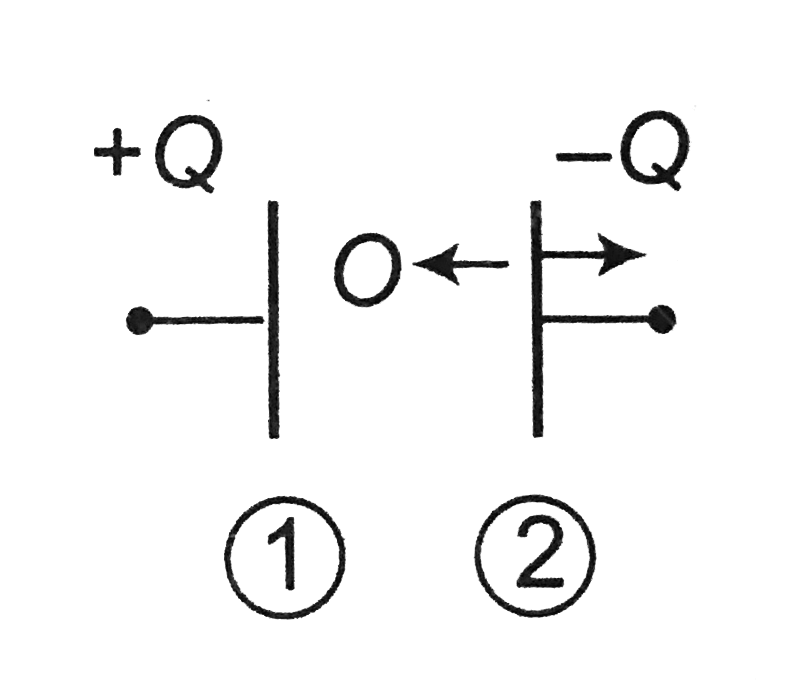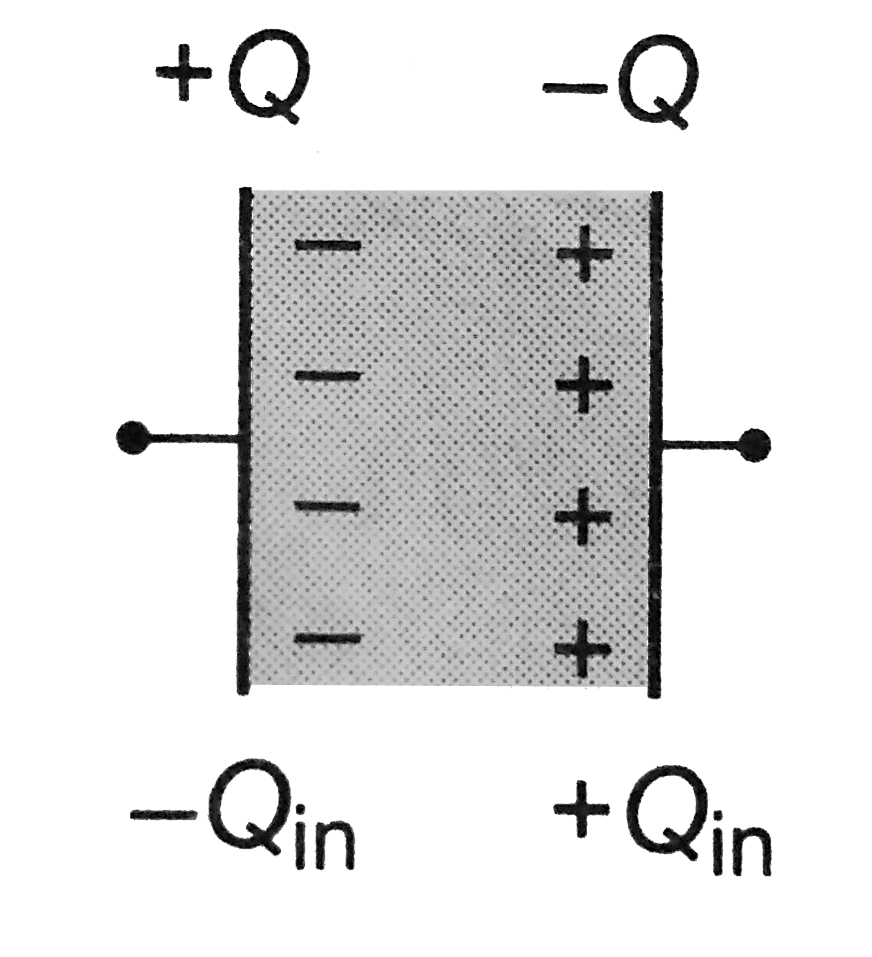A parallel plate capacitor of capacitance 10μF is charged to potental 50V and then isolated.
(A) After filling the space by a dielectric slab, the potential of capacitor becomes 25V. The dielectric constant is 2
(B) If plate separation is reduced to half, the potential of capacitor become 25V
(c) The force between plates after indriduction of dilectric or after change in separation between plates remains same
A,B
A,C
B,C
A,B,C
The correct Answer is:D
Change remain same,
Q=CV=KCV'⇒V'=VK
25=50K⇒K=2
(B) charge remain same, Q=CV=C'V'⇒Cv=2CV'
V'=V2=502=25V
(c) Electric field due to (1) at(2), E=Q2A∈0
Force between plates F=QE
Electric field at (2) due to induced charges +Q∈ and −Q∈ cancels each other hence E.F. at (2) remains same and hence force.
If separation is changed, E remains same.


Topper's Solved these Questions
Similar Questions
A parallel plate capacitor of capacitance 40 μF is charged to a potential difference of 250 V and then the battery is disconnected. Separation between the paltes of the capacitor is 5 mm. A dielectric slab of dielectric constant 5 and thickness 3 mm is introduced in -between the plates of capacitor. Calcualte final charge and potential difference between the plates. Also calculate energy loss due to the introduction of dielectric slab.
View SolutionA parallel plate capacitor is charged to a potential difference of 50V. It is discharged through a resistance. After 1 second, the potential difference between plates becomes 40V. Then
View Solution
Knowledge Check
A parallel plate capacitor of capacitance C is charged to a potential V and then disconnected with the battery. If separation between the plates is decreased by 50% and the space between the plates is filled with a dielectric slab of dielectric constant K=10. then
AP.d. between the plates increases by 95%BP.d. between the plates decreases by 50%CP.d. between the plates increases by 50%DP.d. between the plates decreases by 95%A parallel plate capacitor with air between the plates is charged to a potential difference of 500 V and then insulated. A plastic plate is inserted between the plates filling the whole gap. The potential difference between the plates now becomes 75V. The dielectric constant of plastic is
A44107B5C20/3D10A parallel plate capacitor of capacitance C0 is charged with a charge Q0 to a potential difference V0 and the battery is then disconnected Now a dielectric slab of dielectric constant k is inserted between the plates ofcapacitor. The dimensions of the slab are such that it completely fills the space between the plates, then :
ACharge on the' plates remains the sameBCharge on the plates decreases to Q0/KCCharge on _the plates increases to KQ0DPotential difference between plates remains the same
A parallel plate capacitor of capacitance C is charged to a potential V by a battery . Without disconnecting the battery , the distance between the plates is tripled and a dielectric medium of dielectric constant 10 is introduced between the plates of the capacitor . Explain giving reasons , how will the following be affected :
capacitance of the capacitor
View SolutionA parallel plate capacitor of capacitance C is charged to a potential V by a battery . Without disconnecting the battery , the distance between the plates is tripled and a dielectric medium of dielectric constant 10 is introduced between the plates of the capacitor . Explain giving reasons , how will the following be affected :
charge on the capacitor
View SolutionA parallel plate capacitar, of capacitance, 20μF, is connected to a 100 V supply. After some time, the battery is disconnected , and the space, between the plates of the capacitor is filled with a dielectric, of dielectric constant 5. Calculate the energy stored in the capacitar (i) before (ii)after dielectric has been put in between its plates.
View SolutionA parallel plate capacitor is charged and then isolated. The effect of increasing the plate separation on charge, potential and capacitance respectively are
View SolutionA capacitor of 10 μF is connected to a source of 50 V and then disconnected. When the space between the plates is filled with teflon of dielectric constant 2.5. The new potential difference is -
View Solution